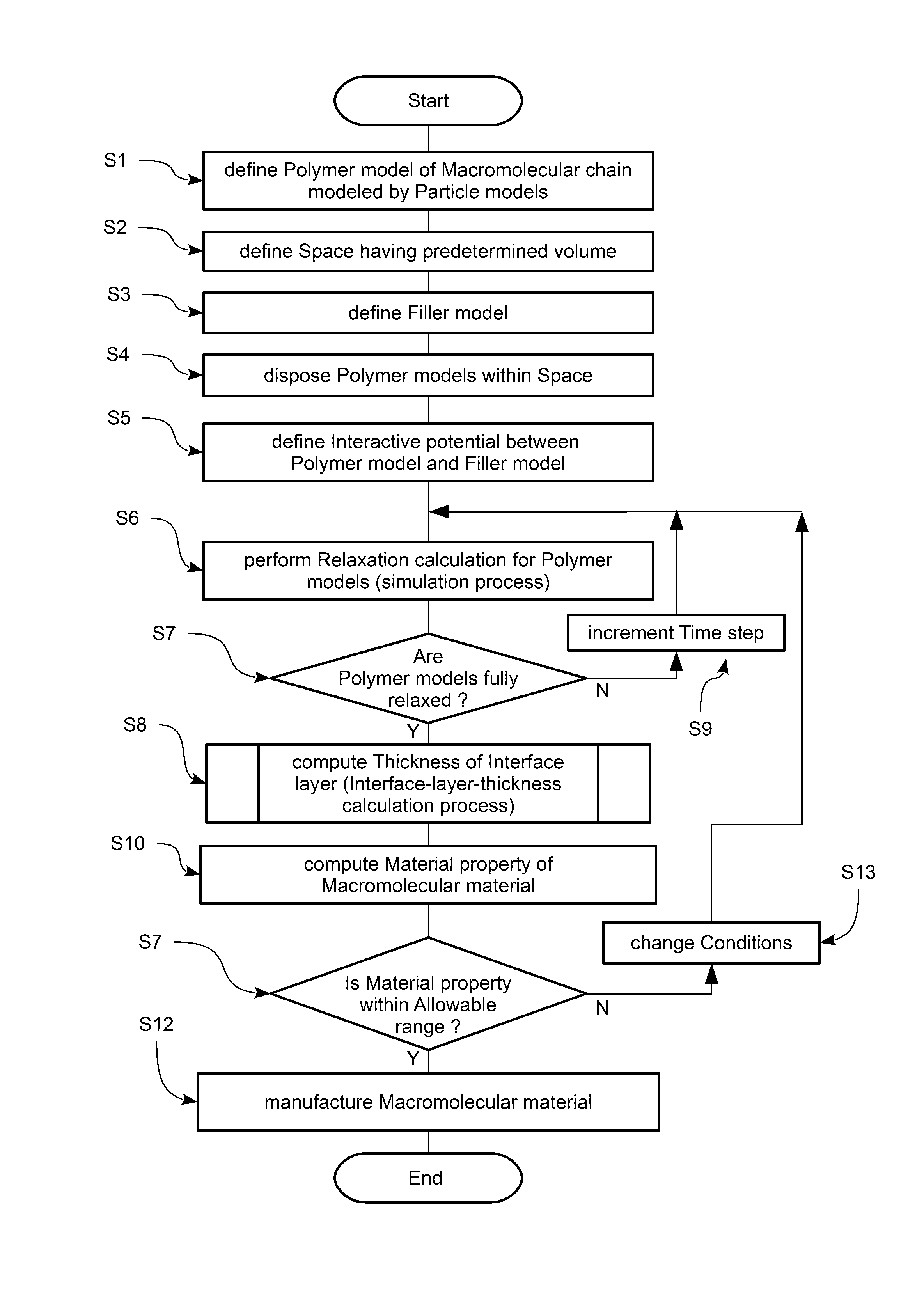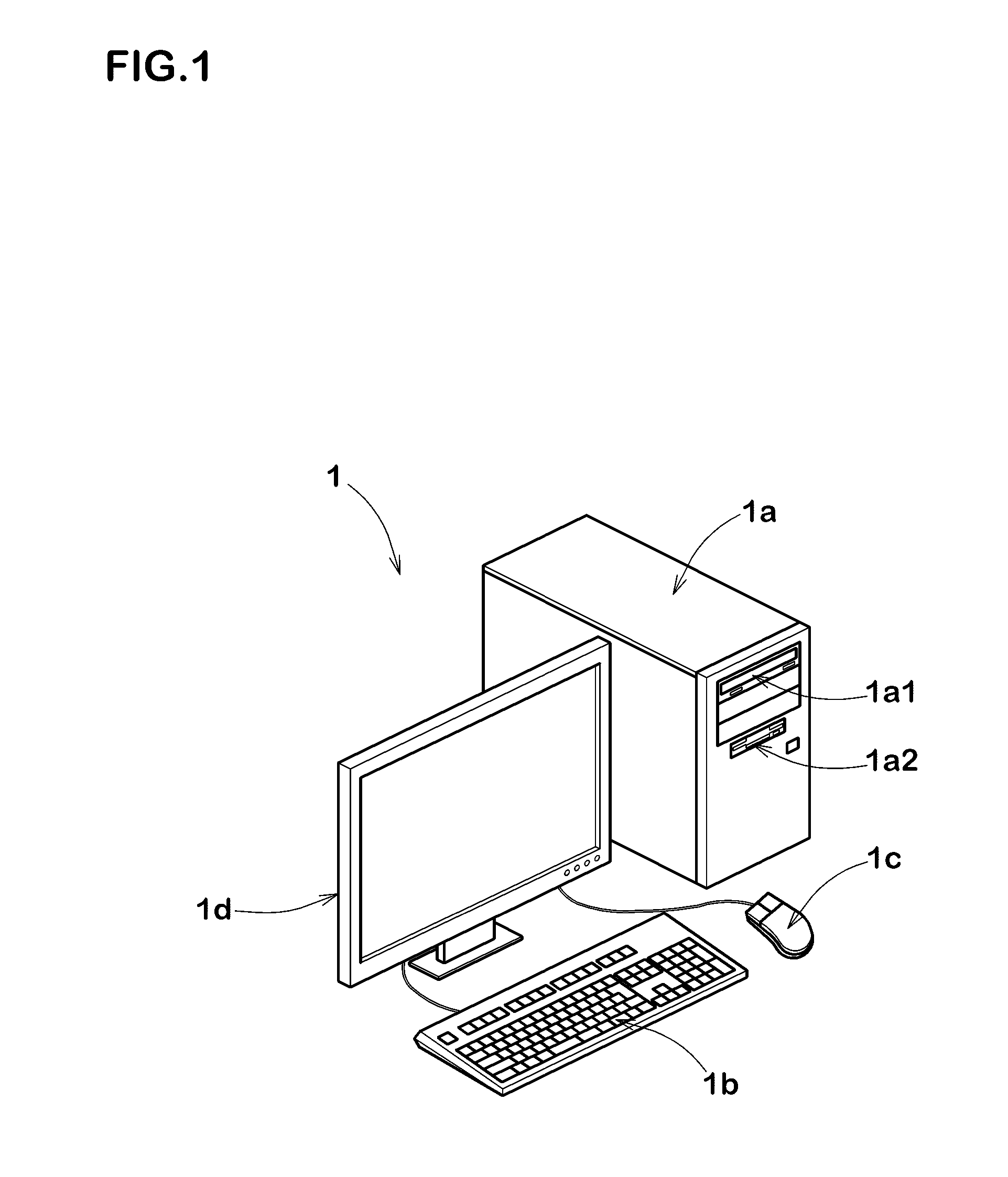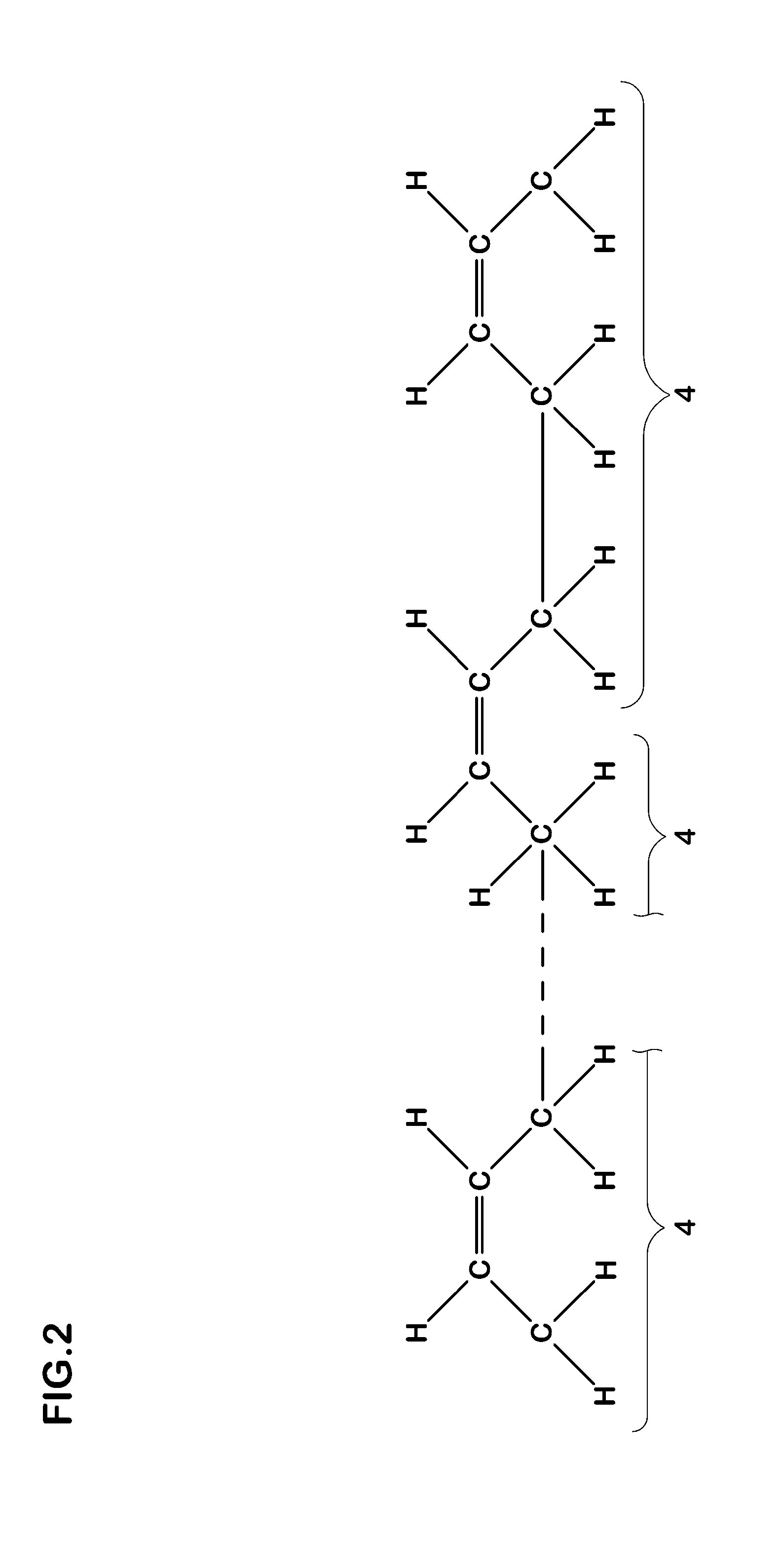Simulation method for macromolecular material
a macromolecular material and computer simulation technology, applied in the field of computer simulation methods for macromolecular materials and fillers, can solve the problems of high time and cost for experimental measuremen
- Summary
- Abstract
- Description
- Claims
- Application Information
AI Technical Summary
Benefits of technology
Problems solved by technology
Method used
Image
Examples
example 1
[0298]The repulsive force potential R given by the expression (1) was defined. The number of the particle models 3 in a polymer model was 50. The radius of inertia was 2.89σ. The length L1 of one side of the space 7 was 28.9σ. The number of the polymer models 2 disposed in the space 7 was 300. The computed thickness w1 was 8.67σ. This value well coincides with the measured value.
example 2
[0299]The repulsive force potential R given by the expression (A1) was defined. The number of the particle models 3 in a polymer model was 20. The radius of inertia was 1.35σ. The length L1 of one side of the space 7 was 13.5σ. The number of the polymer models 2 disposed in the space 7 was 500. The computed thickness w1 was 4.05σ. This value also well coincides with the measured value.
[0300]With respect to the second embodiment (all-atom model 3), the thickness w1 of the interface layer was computed according to the procedure as explained above as Example 3.
example 3
[0301]The macromolecular material was cis-1,4 polybutadiene. The polymerization degree (n) was 10. The radius of inertia was 2.5 Å. The length L1 of one side of the space 7 was 40 Å. The number of the polymer models 2 disposed in the space 7 was 100.
[0302]The computed thickness w1 was 7.5 Å. This value well coincides with the measured value.
[0303]In each example, the computed thickness w1 well coincides with the measured value. Further, in the case of the experimental measurement, it takes several hundred hours to obtain the thickness of the interface layer. But, according to the present invention, it takes only about 1 / 10 to 1 / 20 of that time for the computer of a workstation class to compute the thickness w1.
PUM
 Login to View More
Login to View More Abstract
Description
Claims
Application Information
 Login to View More
Login to View More - R&D
- Intellectual Property
- Life Sciences
- Materials
- Tech Scout
- Unparalleled Data Quality
- Higher Quality Content
- 60% Fewer Hallucinations
Browse by: Latest US Patents, China's latest patents, Technical Efficacy Thesaurus, Application Domain, Technology Topic, Popular Technical Reports.
© 2025 PatSnap. All rights reserved.Legal|Privacy policy|Modern Slavery Act Transparency Statement|Sitemap|About US| Contact US: help@patsnap.com



